
This is where you find all our press releases and news articles.
Analysis Of Feed Cost And Benefit Of Raising Cattle: revenue and feed cost. How do cattle farms account for feed costs and benefits? Small cattle farms generally buy feed pellets from feed pellet suppliers, while large cattle farms will buy cattlle feed pellet machine or cattle feed pellet production lines themselves, which can greatly reduce the cost of feed for cattle breeding. Below is analysis of feed cost and benefit of raising cattle.
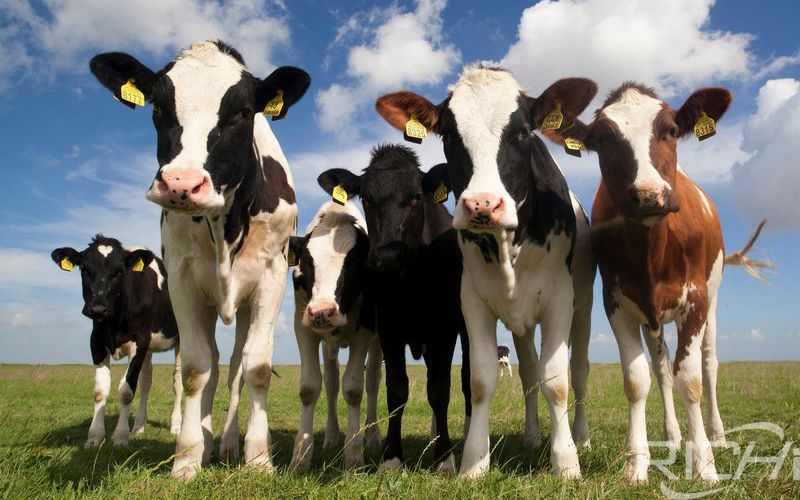
Figure 1 illustrates feeding cost of gain from January 2009 to December 2018. Feeding cost of gain information was obtained from monthly issues of the Focus on Feedlots newsletter (here). Feeding cost of gain averaged $78.10 per cwt. in 2018 ranging from a low of $74.87 in May to a high of $80.31 in December. Given current corn and alfalfa price projections, feeding cost of gain is expected to range from $79 to $82 during the first 6 months of 2019.
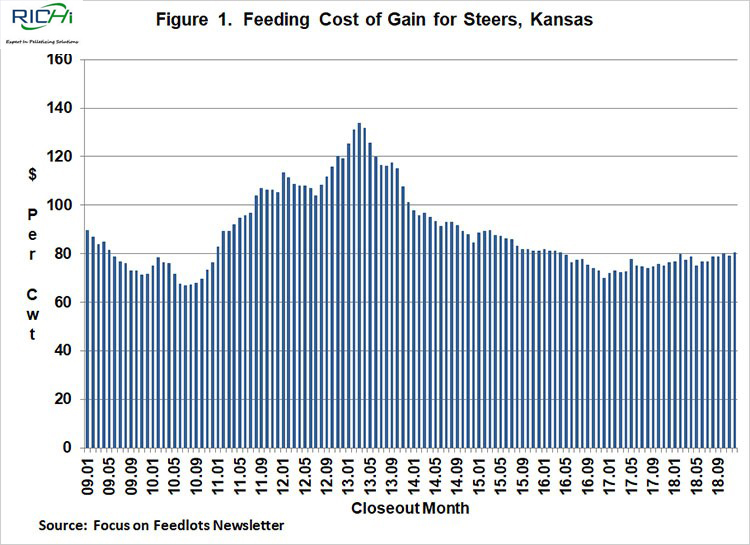
Figure 1. Feeding Cost of Gain for Steers, Kansas
Feeding cost of gain is sensitive to changes in feed conversions, corn prices, and alfalfa prices. Regression analysis using data for the last ten years was utilized to examine the relationship between feeding cost of gain, and feed conversion, corn prices, and alfalfa prices.
Results are as follows: each 0.10 increase in feed conversion increases feeding cost of gain by $1.43 per cwt., each $0.10 per bushel increase in corn prices increases feeding cost of gain by $0.87 per cwt., and each $5 per ton increase in alfalfa prices increases feeding cost of gain by $0.55 per cwt.
The ratio of feeder to fed cattle prices for the last ten years is illustrated in Figure 2. Feeder cattle and fed cattle prices were obtained from the Livestock Marketing Information Center. During the ten-year period, this ratio averaged 1.20. The feeder to fed price ratio was one standard deviation below (above) this average for 13 (18) months during the ten-year period.
The average net return for the months in which the ratio was below one standard deviation of the average was $159 per head. In contrast, the average loss for the months in which the ratio was above one standard deviation was $238 per head. The average ratio for the 18 months with a feeder to fed price ratio that was above one standard deviation of the ten-year average was 1.47.
Given current price projections, the feeder to fed price ratio is not expected to reach these levels. However, the projected ratio is expected to remain above the ten-year average for most of 2019, with the exception being June.
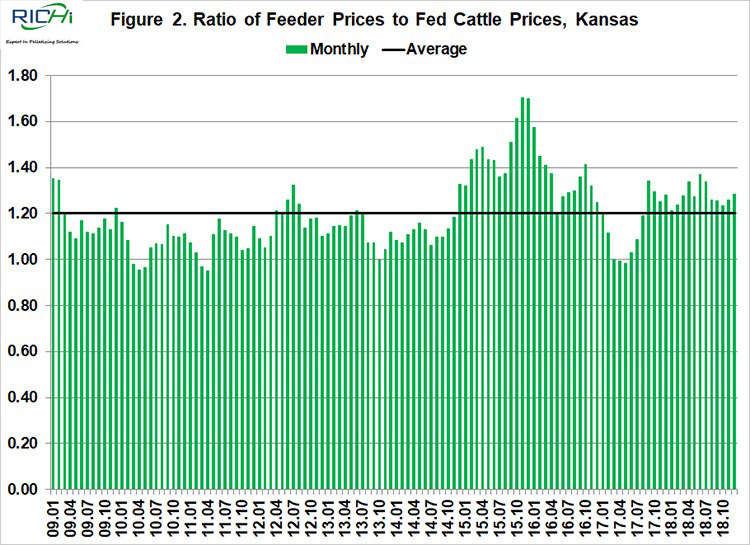
Figure 2. Ratio of Feeder Prices to Fed Cattle Prices, Kansas
As cattle feeders well know, if cattle are not purchased at the “right price”, losses will incur. Given the uncertainty in fed cattle prices, this is easier said than done. The strong correlation coefficient between cattle finishing net returns and the feeder to fed cattle price ratio almost guarantees that losses will occur when this ratio is relatively high.
Monthly cattle finishing net returns from January 2009 to December 2018 are presented in Figure 3. It is important to note that net returns were computed using closeout months rather than placement months. Several data sources were used to compute net returns. Average daily gain, feed conversion, days on feed, in weight, out weight, and feeding cost of gain were obtained from the Focus on Feedlots newsletter, feeder cattle and fed cattle prices from the Livestock Marketing Information Center, and interest rates from the Federal Reserve Bank of Kansas City.
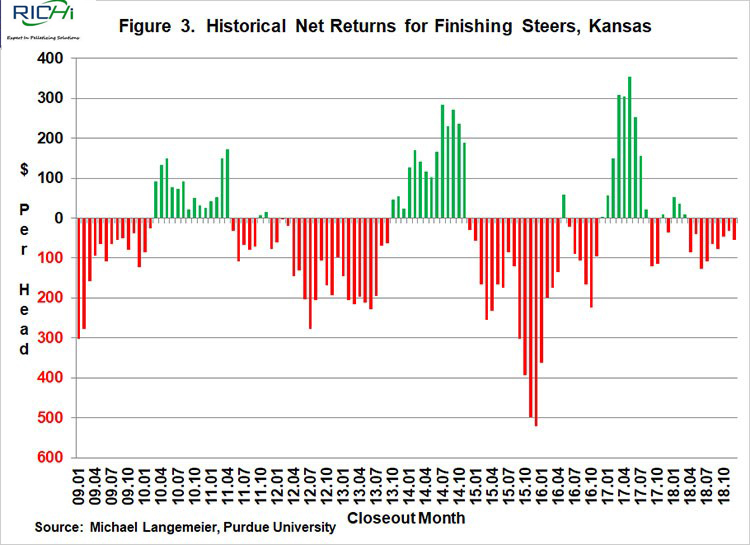
Figure 3. Historical Net Returns for Finishing Steers, Kansas
Net returns averaged $111 per head in 2017 and a negative $45 per head in 2018. Historical and breakeven prices for the last ten years, as well as projected breakeven prices for 2019 are illustrated in Figure 4. Breakeven prices in the first 4 months of 2019 are expected to range from $124 to $127 per cwt. Breakeven prices for the rest of the year are expected to range from $117 to $121.
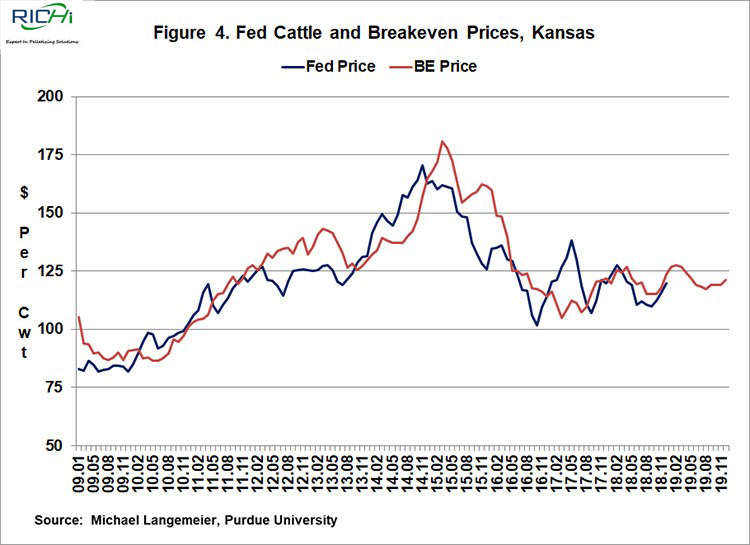
Figure 4. Fed Cattle and Breakeven Prices, Kansas
Correlation coefficients can be used to examine the relationship between net returns, feeding cost of gain, and the feeder to fed cattle price ratio. Correlation is a statistical measure of how variables move together and is bounded by -1.0 and 1.0. A value of -1.0 indicates two variables move together perfectly, but in opposite directions, while a value of 1.0 indicates two variables move up and down together proportionally. Values close to zero indicate two variables have little relationship to each other.
Net returns are significant and negatively correlated with feeding cost of gain (r = -0.230) and the feeder to fed cattle price ratio (r = -0.758). The strong correlation between net returns and the feeder to fed cattle ratio emphasizes the importance of purchasing feeders at the “right price”.
Cattle finishing net returns are sensitive to changes in feeding cost of gain and the feeder to fed cattle price ratio. Regression analysis using data for the last ten years was utilized to examine the relationship between these variables. Results are as follows: each $1 increase in feeding cost of gain results in a decrease in cattle finishing net returns of $3.70 per head, and each 1 percent increase in the feeder to fed cattle price ratio results in a decrease of $8.63 per head in cattle finishing net returns.
Using relationships between corn prices, feeding cost of gain, and cattle finishing net returns; a $0.10 increase in corn prices, holding all else constant, would result in a decrease in cattle finishing net returns of approximately $3.20 per head. Similarly, a $10 increase in alfalfa prices would result in a decrease in cattle finishing net returns of approximately $4.05 per head.
This article examined the impact of changes in corn and alfalfa prices on feeding cost of gain and cattle finishing net returns. Each $0.10 increase in corn price results in a decrease in feeding cost of gain of approximately $0.87 per cwt. and a decrease in net returns of approximately $3.20 per head. Each $10 increase in alfalfa prices results in a $1.10 per cwt. decrease in feeding cost of gain and a decrease of $4.05 per head in net returns.
The impact of changes in corn and alfalfa prices on cattle finishing net returns may seem small to some industry observers. It is important note that the impact of changes in corn and alfalfa prices on cattle finishing net returns is dampened by the fact that lower (higher) feed prices typically increase (decrease) feeder prices. These relatively higher feeder prices adversely impact cattle finishing net returns.
Having the right mix of reliable, high-quality pellet machine and pelletizing systems and expert support is essential to your success. Watch how our end-to-end feed pellet plant solutions have helped our customers optimize their performance.
Our customized and future-proofed turnkey pellet plant solutions is designed with you at the core. From vision to reality and beyond, our team stays connected with yours. Giving you peace-of-mind with an expert at your side.

At RICHI, we go beyond project completion. With RICHI Servicee, we’re your dedicated partners in success. Count on us for expert guidance, minimal downtime, and optimized productivity. Choose RICHI for unmatched service and support.



Meet global product demands and quality standards with industry-leading pellet plant design, engineering, equipment, and construction services for pellet processors.


Your Partner Beyond Project Completion
2000+ cases
RICHI is the leading designer, manufacturer and builder of pellet plants in the world, completing over 2000 projects in 140 countries across 6 continents.
Read More
Increase plant productivity, profitability, and safety by integrating high quality equipment into your pellet production line. Over the years, RICHI has become China's top pellet equipment manufacturer. At the same time, RICHI has established valuable partnerships with the world's leading component and raw material manufacturers to bring you the best there is in technology, automation, and efficiency in pelleting plant machinery.

For nearly 30 years, RICHI has been providing best-in-class pellet plant equipment and services to clients across a variety of industries, sizes, and needs. We pride ourselves on the knowledge and skill that each team member possesses – from our technical sales team to our process design engineers. You can count on RICHI Machinery to take your operation to the next level of innovation, quality, and success.
Need help with your pellet manufacturing plant project? Contact us today.
ANIMAL FEED
BIOMASS
WOOD
ORGANIC FERTILIZER
AQUA FEED
CAT LITTER
MUNICIPAL WASTE RECYCLING
SPECIAL PELLET PRODUCTION
RICHI Machinery continues to deliver world class pellet mill equipment, pellet plant engineering and project solutions that add value to our customers in the animal feed, wood waste, agriculture waste, organic fertilizer, cat litter and special pellet products industries. Throughout the years, we RICHI Machinery have built strong brand, becoming industry-leading pellet machine manufacturer. We value integrity, promise quality, and prioritize your success.
Learn MoreWith our expert team, we precisely implement your process engineering requirements in pellet mill and pelletizing plant systems. No matter which industry you’re in – we understand your needs and deliver solutions that meet the highest standards.
At RICHI, quality comes first. Our pellet making machine and related pellet line equipment undergo rigorous quality controls to ensure they meet the highest standards. Rely on products that are durable, safe, and efficient.
With decades of experience in pellet machine and pellet production line production, we have earned a reputation as a trusted partner in various industries. Our expertise allows us to cover a wide range of applications.
Not only do we offer premium pelleting equipment, but we are also experts at designing, building, installing, and maintaining facilities from the ground up. Our expertise is within pellt plant process design, discovering the most efficient, productive, and profitable way to handle your materials in an end-to-end cycle.

Keeping in touch with us is an effective way to solve all your problems. If you have any needs or questions, please leave your contact information, then RICHI technical consultants will send design, quotation, videos to your mailbox. You can also contact us directly via WhatsApp: +86 13838389622
Copyright©2015-2024 by HENAN RICHI MACHINERY CO., LTD. All rights reserved.